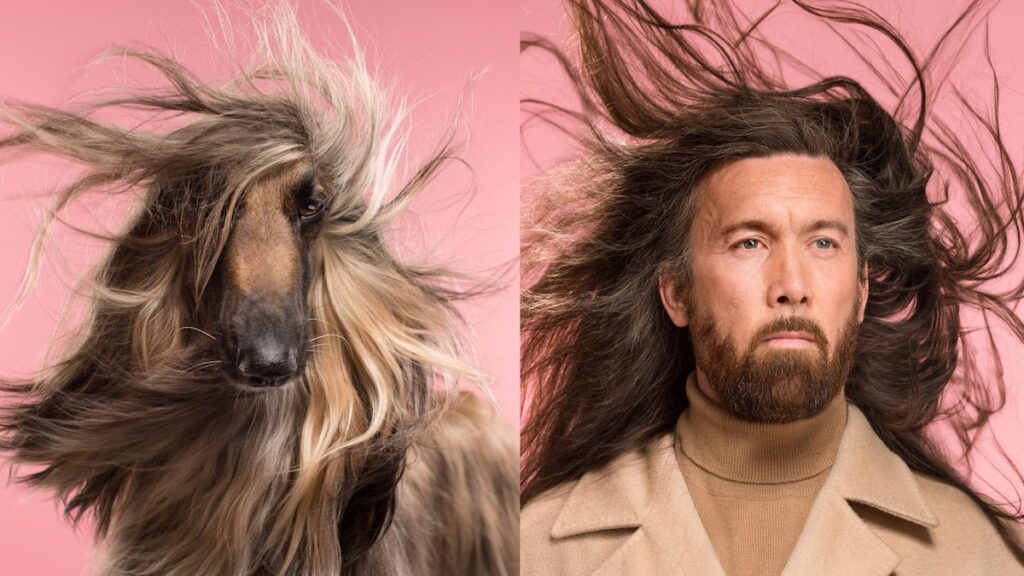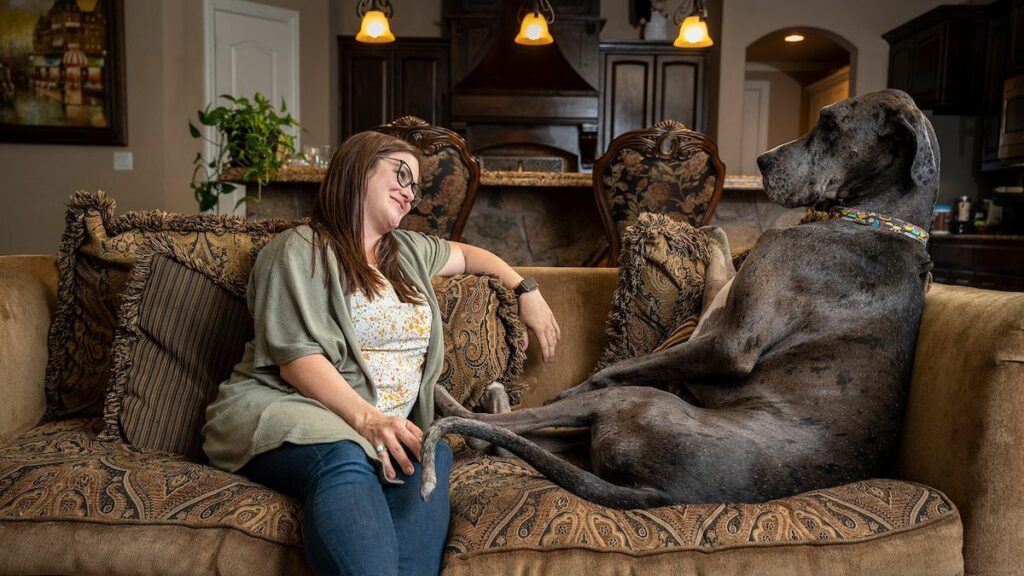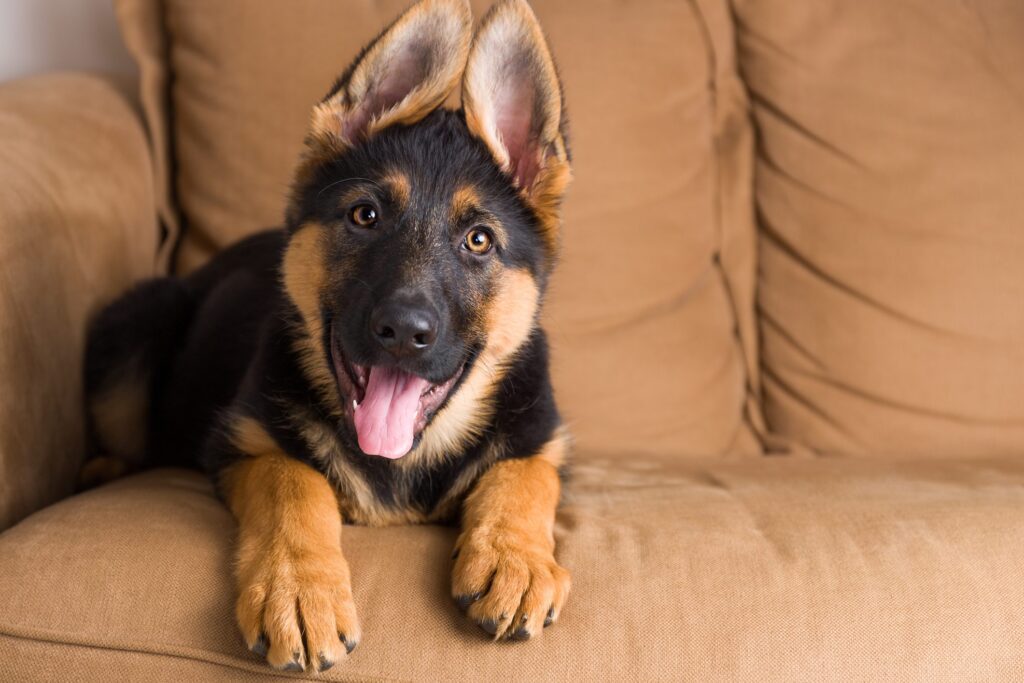When I strolled into the ring at the Pennington Day dog show’s Look-Alike Contest in suburban New Jersey in the mid-1990s, I had all the confidence of a young girl assured of victory.
After all, my buff cocker spaniel puppy had long, floppy ears that perfectly matched my wavy, blond bob. After winning that first contest, Soccer and I competed for about four years at Pennington Day in an array of matching outfits—hers purloined from my younger sister—racking up a row of blue ribbons. I have not succeeded at anything as consistently since.




The author with her cocker spaniel, Soccer, circa the mid-1990s.
Photograph courtesy Tara Law (Top) (Left) and Photograph courtesy Tara Law (Bottom) (Right)
Turns out, there is actual science to back up the stereotype that dogs look like their owners. A recent review of 15 studies from around the globe suggests that not only people and their pets look and act similarly, but that the similarities between their personalities deepen over time.
In many of the studies, scientists asked study volunteers to match pictures of their dogs and owners, which they did better than they would just by chance. In one study, participants also inferred whether dogs were matched with the correct owners despite only being able to see the dogs’ or the owners’ eyes. (Read why dogs are more like us than we thought.)


Both Sergei and Spike, his Siberian husky, have heterochromia, a genetic condition that causes eyes of different colors.
Photograph by Gerrard Gethings


Sasha and her cavachon, Sydney. A cavachon is a mixed breed of Cavalier King Charles spaniels and bichon frises.
Photograph by Gerrard Gethings
Another found that women often had hair of a similar length to the dogs’ ears—much like my spaniel-like bob and bangs. So what gives? Experts suspect people choose dogs that look like them or reflect them in some way—or perhaps, subconsciously, as in my case, look a bit like a canine version of their child.
The review also showed that dogs and owners have similar personality traits, especially extroversion and neuroticism, and that their temperaments appeared to grow more alike. The study offers different theories for why, including that owners may be drawn to dogs that are like them to begin with, and as they age together, the two species may regulate each other’s emotions, reinforce each other’s behavior, or learn together.


LIMITED TIME OFFER
The perfect gift for the history buff in your life. Give now and get a FREE TOTE BAG.
“It resembles the way we also look for our partners,” says study leader Yana Bender, a doctoral researcher in the DogStudies Research Group at the Max Planck Institute of Geoanthropology in Germany. Dogs and their owners share “a very close relationship … comparable to many human relationships.”


Francois has a similar appearance to his English bulldog, Antoine.
Photograph by Gerrard Gethings


Jessica and her bichon frise, Buddy, share the same hairdo. The word “frise” means curly in French.
Photograph by Gerrard Gethings
Deep attachments
Authors of the review, published in the journal Personality and Individual Differences, noted several limitations to the research, including the relatively small number of dogs and owners included in the studies. Many of the owners who volunteered to participate in the studies also had purebred dogs, and scientists need more data on mixed-breed canines, which are more common worldwide.
What’s more, owner bias plays a role: Without a standardized way to assess dogs’ personalities, scientists must ask people to evaluate their own pets, who can be as hard to think about objectively as your human family. Researchers can address this bias by asking owners more clearcut questions about how dogs act in certain situations, not whether their pup is a good boy.
The influence humans have on their dogs comes as no surprise to Borbála Turcsán, a research fellow at ELTE Faculty of Science in Hungary who studies dog behavior. She estimated that while about a third of a dog’s personality is genetic, another two-thirds is determined by their environment, which is largely shaped by their owner if they’re together from puppyhood. Dogs are also primed to trust their owners, because tens of thousands of years of domestication made them deeply attached to us.
You May Also Like
“It’s the same is the child-mother attachment, but dogs form it for humans. This is the basis of all social relationships between dogs and humans,” said Turcsán, who wasn’t involved in the new review. Like a child, dogs look to their owners as role models, “and trust blindly that they know better.” (Why your dog helps you relax more than your friends.)
For instance, “if there is a truck coming and it’s very loud, then the dog will look back at the owner. If the owner doesn’t care, then the dog will learn not to care,” she says.
Turcsán also suggests using your pet’s trust to reduce their fearfulness, such as exposing puppies to loud noises like fireworks in a safe environment.
Supporting our best friends
Bender hopes her study will help people understand dogs even better, particularly those animals that work in roles vital to public safety such as search-and-rescue, police, and service dogs.
Ultimately, a key question for owners looking to improve their relationship with their dogs, she says, is “how should I treat them to be the best version of themselves?”
That challenge is top of mind for me, as my husband and I just adopted Milo, a mixed-breed puppy that loves playing fetch and daily walks outside. He also has tan, short ears, which I guess are somewhat like my current hair style. Maybe that influenced why my husband and I picked him after scrolling through several hundred photos of dogs at Los Angeles’ shelters and nonprofits. (Read about the growing moment to breed healthier, friendlier dogs.)
But whether we one day win a look-alike contest or not, I’ll be mindful that that the way I treat him can have a profound impact on his behavior. And of course, however he acts, he’ll always be my goodest boy.



